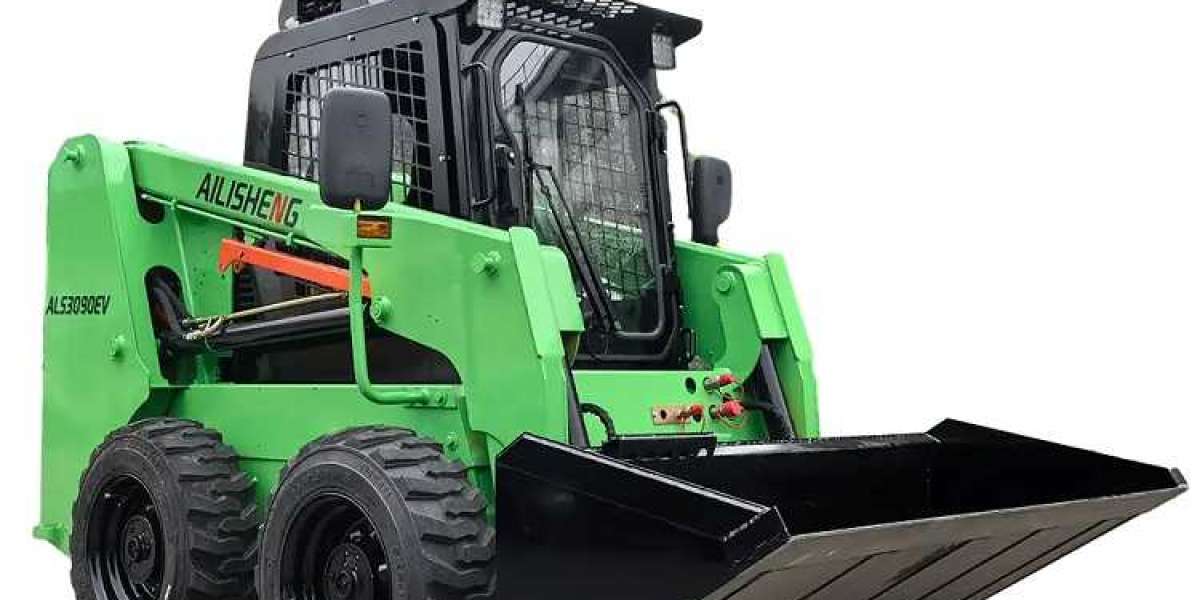The construction and landscaping industries are seeing a major shift towards sustainability, and one of the standout innovations driving this change is the electric skidsteer. Compact, efficient, and environmentally friendly, these electric machines are revolutionizing the way professionals approach their projects. By replacing traditional fuel-powered equipment with electric alternatives, companies are reducing emissions, cutting noise levels, and lowering operational costs, all while maintaining the power and versatility needed for a wide range of tasks.
What is an Electric Skid Steer Loader?
An electric skid steer loader is a compact, electrically powered machine equipped with lift arms and attachments that make it versatile for a wide range of tasks. Unlike traditional skid steers that run on diesel or gasoline engines, electric models use battery power, making them quieter, more energy-efficient, and environmentally friendly.
Key Features
- Battery-powered operation: Runs on rechargeable batteries rather than fuel, reducing emissions and energy consumption.
- Compact design: Just like traditional skid steers, they are designed for tight spaces and smaller job sites.
- Zero-emissions: Produces no exhaust fumes, making it ideal for indoor use or in areas with strict environmental regulations.
- Reduced noise levels: Electric motors significantly cut down on noise, making them more suitable for urban projects and noise-sensitive areas.
Benefits of Using Electric Skid Steer Loaders
Switching to electric skid steer loaders offers several advantages, both environmentally and operationally.
1. Environmental Impact
Electric skid steers drastically reduce the carbon footprint of construction sites by eliminating emissions associated with gasoline and diesel engines. They contribute to cleaner air and can be especially beneficial in urban areas where air quality regulations are strict.
2. Lower Operating Costs
Electric models have fewer moving parts compared to their fuel-powered counterparts, leading to reduced maintenance needs. Additionally, the cost of electricity is generally lower than fuel, which results in long-term savings on energy expenses.
3. Noise Reduction
Traditional skid steers can be very noisy, which poses problems in residential areas or indoor environments. The electric version operates much more quietly, reducing noise pollution and making communication easier for operators on the job site.
4. Improved Efficiency
With instant torque delivery and smoother operations, electric skid steers provide enhanced precision. This makes them ideal for tasks that require fine control, such as landscaping or interior demolition.
Applications of Electric Skid Steers
The versatility of skid steers means they can be used in a variety of industries and settings. Electric models are particularly well-suited for the following applications:
1. Indoor Construction and Demolition
Because electric skid steers emit no exhaust fumes, they are perfect for indoor construction sites where ventilation may be limited. Tasks like interior demolition, floor removal, and material transport are made safer and more efficient.
2. Urban Landscaping and Construction
In noise-sensitive environments like parks or residential neighborhoods, electric skid steers can perform without disturbing the surrounding areas. Their quiet operation is ideal for early morning or late evening projects, reducing the risk of noise complaints.
3. Agricultural Work
Farmers and agricultural workers can benefit from electric skid steers, as they can help reduce emissions on farms and contribute to more sustainable agricultural practices. They can perform tasks such as feeding animals, cleaning barns, and transporting materials without disturbing livestock or causing unnecessary emissions.
Challenges and Considerations
While electric skid steers offer many advantages, there are some challenges to consider before making the switch.
1. Battery Life
One of the main concerns with electric skid steers is battery life. Depending on the job, the machine may need to be charged frequently, which could lead to downtime on larger projects. However, advancements in battery technology are improving this limitation.
2. Charging Infrastructure
For job sites that do not have easy access to electricity, charging an electric skid steer may pose logistical challenges. Businesses may need to invest in charging stations or portable power units.
3. Initial Cost
Electric skid steers can have a higher upfront cost compared to traditional models. However, the long-term savings on fuel, maintenance, and potential government incentives for eco-friendly equipment can help offset the initial investment.
The Future of Electric Skid Steers
As the construction industry continues to move towards greener practices, the demand for electric equipment, including skid steers, is expected to rise. Manufacturers are investing in new technologies to improve battery life, charging times, and overall performance, making these machines a more viable option for a wider range of applications.
Conclusion
Electric skid steer loaders represent a major step forward in sustainable construction equipment. They offer numerous benefits, including lower emissions, reduced noise levels, and lower operational costs, making them an attractive option for contractors and landscapers alike. With ongoing advancements in technology, these machines are set to become a staple in modern construction and landscaping.








